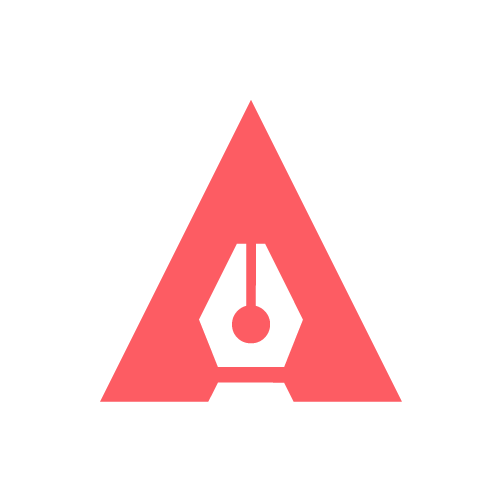Here are general guidelines on designers: who they are and what they do. In general, designers are creative, spatially inclined thinkers with a great eye. As you read this, keep in mind that some designers may have expertise in more than one of these areas.
GRAPHIC DESIGNER
Graphic design is a form of visual communication and leverages images and other visual elements to convey ideas. It has become an umbrella term for various types of design work.
From logos to billboards to packaging for products, graphic designers bring concepts, ideas, and stories to life using typography, shapes, color, and images. They educate and inspire customers to learn more about something, to make a purchase, or to sign up. They use software such as Photoshop and InDesign to create static images and lay out pages. Designers who focus on printed materials like magazines or brochures are also known as print designers.
Graphic Designers Create:
Visual identity: logos, letterhead, business cards
Marketing materials: brochures, flyers, postcards, posters
Magazines, books, catalogs
Product packaging
Presentations
T-shirt designs
Annual reports
Illustrations
Skills: Photoshop, InDesign, Illustrator
INTERACTIVE/WEB DESIGNER
From landing pages and blog templates to entire websites and mobile apps, the digital space is an interactive designer’s domain.
Creating a beautiful design is only part of the job. Interactive or web designers also need to understand the technology used to build websites and turn their designs into actual online experiences. As a result, some designers may have an understanding of front-end web development and might know programming languages such as JavaScript. That said, content management systems or CMS, such as WordPress and Drupal, are widely used for many websites today. They make it easier for designers to customize premade templates and themes without needing to work with a developer or know programming languages.
In general, web designers will know Adobe Creative Suite (Photoshop, Illustrator, etc.) and some may also know CSS and HTML.
Because of the complexity of the web, there are many relatively new (and in-demand) skills designers may specialize in:
User experience (UX): explores the experience people have using a site, app, or tool to ensure it’s easy to use and not confusing.
User interface (UI): involves how people navigate through a site, app, or tool, using elements such as buttons, menus, color, and images. Many designers may be skilled at both UX and UI.
Interaction design: focuses on how people are involved with the experience of the product, for example, a progress bar that shows where you are while signing up for a site or an icon that changes color to signal you’ve turned on a setting.
Information architecture (IA): involves creating the blueprint for a website by making sure it’s organized in an understandable way. Information architects come from a variety of backgrounds, including design, writing, library science, and psychology.
Interactive Designers Create:
Websites, landing pages, microsites, web pages
Blog templates and themes
Mobile apps
Banner ads
Social media assets
Email marketing assets
Skills: Photoshop, Illustrator, Dreamweaver, CSS, HTML, wireframing, prototyping
MOTION GRAPHICS DESIGNER
The world of the motion graphics designer evolves frame by frame. Whether they’re creating an explainer video or the opening title sequence of a movie, motion graphics designers bring movement to otherwise static images, text, illustrations, and more. For instance, to develop an online video, they typically will start by creating storyboards that map out each scene based on a script. From there, they put the scenes and images together, adding motion and graphical elements to ensure it moves seamlessly from frame to frame. They also sync up the action in each scene with a voiceover or music.
Motion Graphics Designers Create:
Explainer videos
Storyboards
Promotional videos
Animated graphics (for TV shows, for example)
Movie title sequences
Product demos
Animated presentations
Skills: Illustrator, Photoshop, After Effects, Final Cut Pro, Cinema 4D, Maya
ANIMATOR
From animated films to special effects to video games, animators bring stories, characters, and entire other worlds to life through software such as 3ds Max, Maya, Cinema 4D, After Effects, and Blender. Designs can be two-dimensional (2D) or three-dimensional (3D).
Animators Create:
Movie special effects
Animated films
Video games
Skills: 3ds Max, Maya, Cinema 4D, Blender, After Effects, Flash, Photoshop
ARCHITECTURAL DESIGNER
Drafting plans for houses, buildings, and outdoor spaces is all in a day’s work for an architectural designer. They translate concepts from engineers, architects, and clients into drawings and 3D models. They use software such as AutoCAD and Revit and are familiar with building codes and construction materials.
Architectural Designers Create:
Technical drawings
Building plans
Documentation
Renderings
Skills: AutoCAD, 3ds Max Design, Rhino, Grasshopper, V-Ray, SketchUp, Revit, ArchiCAD, Photoshop, Illustrator
INTERIOR DESIGNER
Color swatches, furniture, fixtures, and measuring tape are a few of the tools of the trade for interior designers. They transform spaces to make them more functional, efficient, and aesthetically pleasing. They select furniture, accessories, paint, lighting, fabrics, and other elements based on the space and their client’s needs and style preferences. Many designers create drawings or diagrams of the layout or floor plan of the space with programs such as AutoCAD or Revit.
Interior Designers Create:
Floor plans
Diagrams
Layouts
Functional spaces
Visually appealing spaces
Skills: AutoCAD, Revit, SketchUp, Photoshop
INDUSTRIAL DESIGNER/PRODUCT DESIGNER
Consumer electronics, cars, construction equipment. Industrial designers, also known as product designers, develop every kind of product imaginable for a wide variety of industries and purposes. Through prototyping, testing, and iterating, they bring products to life. They also consider the function, form, and ergonomics of a product when designing. They use computer-aided design (CAD) programs such as AutoCAD or SolidWorks to create and manipulate 3D models of a product.
Industrial Designers Create:
Consumer and household items
Cars, bikes, planes
Consumer hardware and electronics
Appliances
Medical devices
Machinery
Skills: 3ds Max Design, AutoCAD, SolidWorks, AcceliCAD, MathCAD, Catia, Ansys
INSTRUCTIONAL DESIGNER
Within a company, instructional designers create learning experiences for a wide range of subjects such as new hire on boarding, product tutorials, legal and compliance protocols, and management development. Whether they’re in a virtual classroom or a conference room, they understand how people learn and create experiences that will be effective for diverse audiences.
Instructional Designers Create:
Training videos
Instructional materials
Courses and workshops
Source: Upwork

